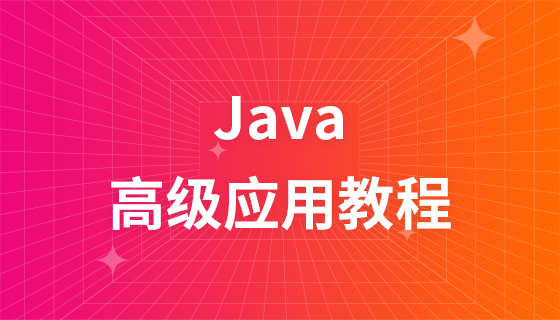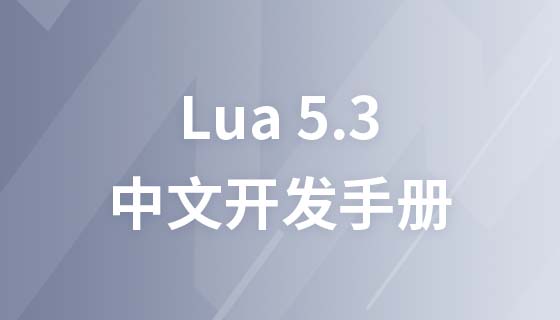C++多线程下单例模式需保证线程安全,核心是确保实例唯一且初始化安全。传统懒汉模式因竞态条件易导致多实例和内存泄漏,C++11后推荐使用静态局部变量(Meyers Singleton)或std::call_once实现线程安全的延迟初始化,前者利用标准保证的静态变量初始化原子性,简洁高效;后者通过once_flag确保初始化仅执行一次,但需手动管理内存。双重检查锁定(DCLP)虽可优化性能,但易因指令重排导致未定义行为,正确实现需结合std::atomic和内存序,复杂且易错,不推荐为首选。单例的销毁同样重要,Meyers Singleton由运行时自动析构,但可能面临静态析构顺序问题;堆上创建的单例应通过“看门狗”类或atexit注册销毁,避免内存泄漏。总之,应优先选择Meyers Singleton,兼顾安全与简洁。

C++中的单例模式,核心就是确保一个类在整个程序运行期间只有一个实例,并提供一个全局访问点。但在多线程环境下,这个看似简单的需求会变得异常复杂,因为多个线程可能同时尝试创建这个唯一的实例,从而导致竞态条件,最终破坏单例的唯一性原则。因此,在多线程环境中使用单例模式,最关键的是要保证其初始化过程的线程安全性。
要实现C++单例模式在多线程环境下的安全使用,我们主要围绕如何确保实例的唯一且线程安全的初始化展开。核心思想是在第一次创建实例时,对操作进行同步,避免多个线程同时执行创建逻辑。C++11及更高版本提供了几种优雅且高效的机制来解决这个问题,其中最推荐的是使用静态局部变量(Meyers Singleton)或
std::call_once
坦白说,当我们初次接触单例模式时,很多教程都会给出一个最基础的版本,比如这样:
class NaiveSingleton {
public:
static NaiveSingleton* getInstance() {
if (instance == nullptr) { // 检查点1
instance = new NaiveSingleton(); // 创建点
}
return instance;
}
private:
NaiveSingleton() = default;
~NaiveSingleton() = default;
NaiveSingleton(const NaiveSingleton&) = delete;
NaiveSingleton& operator=(const NaiveSingleton&) = delete;
static NaiveSingleton* instance;
};
NaiveSingleton* NaiveSingleton::instance = nullptr;这个版本在单线程环境里工作得好好的,但一旦你引入多线程,问题就来了。想象一下,两个线程(T1和T2)几乎同时调用
getInstance()
立即学习“C++免费学习笔记(深入)”;
if (instance == nullptr)
instance
nullptr
if (instance == nullptr)
instance
nullptr
instance = new NaiveSingleton();
instance = new NaiveSingleton();
结果就是,你不仅创建了不止一个单例对象(违反了单例的核心原则),而且T1创建的那个对象还可能因为没有被正确管理而导致内存泄漏。更糟糕的是,如果构造函数里有复杂的资源分配,这种竞态条件可能导致更难以追踪的程序崩溃或数据损坏。这就像在一个只有一把钥匙的房间里,两个人同时去摸门把手,都以为自己能拿到钥匙,结果却各自配了一把新钥匙,场面一下就混乱了。
在现代C++中,我们有更简洁、更安全的方式来处理这个问题,主要得益于语言标准对静态局部变量初始化行为的明确规定,以及并发库的引入。
1. Meyers Singleton(静态局部变量)
这是我个人最推荐的方式,因为它兼顾了简洁性、效率和线程安全性。C++标准(自C++11起)明确规定,静态局部变量的初始化是线程安全的。也就是说,如果多个线程同时尝试初始化同一个静态局部变量,只有一个线程会执行初始化,其他线程会阻塞直到初始化完成。
class ThreadSafeSingleton {
public:
static ThreadSafeSingleton& getInstance() {
static ThreadSafeSingleton instance; // 静态局部变量
return instance;
}
private:
ThreadSafeSingleton() {
// 构造函数,可能包含一些资源初始化
std::cout << "ThreadSafeSingleton instance created." << std::endl;
}
~ThreadSafeSingleton() {
std::cout << "ThreadSafeSingleton instance destroyed." << std::endl;
}
ThreadSafeSingleton(const ThreadSafeSingleton&) = delete;
ThreadSafeSingleton& operator=(const ThreadSafeSingleton&) = delete;
};工作原理: 当
getInstance()
static ThreadSafeSingleton instance;
instance
getInstance()
2. 使用 std::call_once
std::call_once
#include <mutex> // for std::once_flag and std::call_once
#include <iostream>
class CallOnceSingleton {
public:
static CallOnceSingleton& getInstance() {
std::call_once(onceFlag, []() {
instance = new CallOnceSingleton();
});
return *instance;
}
// 注意:这里需要一个机制来处理实例的销毁,
// 因为它是通过 new 分配的。
// 后面会在销毁策略中讨论。
private:
CallOnceSingleton() {
std::cout << "CallOnceSingleton instance created." << std::endl;
}
~CallOnceSingleton() {
std::cout << "CallOnceSingleton instance destroyed." << std::endl;
}
CallOnceSingleton(const CallOnceSingleton&) = delete;
CallOnceSingleton& operator=(const CallOnceSingleton&) = delete;
static CallOnceSingleton* instance;
static std::once_flag onceFlag;
};
CallOnceSingleton* CallOnceSingleton::instance = nullptr;
std::once_flag CallOnceSingleton::onceFlag;工作原理:
std::call_once
std::once_flag
onceFlag
std::call_once
new
双重检查锁定模式(Double-Checked Locking Pattern, DCLP)在多线程编程中是一个经典的优化尝试,其核心思想是在加锁前和加锁后都进行一次条件检查,以减少锁的竞争。对于单例模式,它的初衷是为了避免每次调用
getInstance()
instance
nullptr
一个看似合理的DCLP实现可能长这样:
#include <mutex> // for std::mutex
#include <iostream>
class DCLPSingleton {
public:
static DCLPSingleton* getInstance() {
if (instance == nullptr) { // 第一次检查:无锁
std::lock_guard<std::mutex> lock(mtx);
if (instance == nullptr) { // 第二次检查:有锁
instance = new DCLPSingleton();
}
}
return instance;
}
private:
DCLPSingleton() {
std::cout << "DCLPSingleton instance created." << std::endl;
}
~DCLPSingleton() {
std::cout << "DCLPSingleton instance destroyed." << std::endl;
}
DCLPSingleton(const DCLPSingleton&) = delete;
DCLPSingleton& operator=(const DCLPSingleton&) = delete;
static DCLPSingleton* instance;
static std::mutex mtx;
};
DCLPSingleton* DCLPSingleton::instance = nullptr;
std::mutex DCLPSingleton::mtx;然而,上述代码在C++11之前是存在严重问题的! 问题出在内存模型和编译器/CPU的指令重排。
instance = new DCLPSingleton();
instance
在没有适当内存屏障的情况下,编译器或CPU可能会对这些操作进行重排。例如,步骤3可能在步骤2完成之前发生。这意味着,一个线程可能在构造函数完全执行前,就将一个“半成品”对象的地址赋值给了
instance
instance
nullptr
正确的DCLP(使用std::atomic
为了在C++中正确实现DCLP,我们需要使用
std::atomic
#include <mutex>
#include <atomic> // for std::atomic
#include <iostream>
class CorrectDCLPSingleton {
public:
static CorrectDCLPSingleton* getInstance() {
// 使用 memory_order_acquire 确保在读取 instance 前,
// 之前所有写操作(包括构造函数)都已完成。
CorrectDCLPSingleton* tmp = instance.load(std::memory_order_acquire);
if (tmp == nullptr) {
std::lock_guard<std::mutex> lock(mtx);
tmp = instance.load(std::memory_order_relaxed); // 再次检查,这次在锁内
if (tmp == nullptr) {
tmp = new CorrectDCLPSingleton();
// 使用 memory_order_release 确保在写 instance 后,
// 所有之前的写操作(包括构造函数)都对其他线程可见。
instance.store(tmp, std::memory_order_release);
}
}
return tmp;
}
private:
CorrectDCLPSingleton() {
std::cout << "CorrectDCLPSingleton instance created." << std::endl;
}
~CorrectDCLPSingleton() {
std::cout << "CorrectDCLPSingleton instance destroyed." << std::endl;
}
CorrectDCLPSingleton(const CorrectDCLPSingleton&) = delete;
CorrectDCLPSingleton& operator=(const CorrectDCLPSingleton&) = delete;
static std::atomic<CorrectDCLPSingleton*> instance; // 使用 std::atomic
static std::mutex mtx;
};
std::atomic<CorrectDCLPSingleton*> CorrectDCLPSingleton::instance = nullptr;
std::mutex CorrectDCLPSingleton::mtx;我的看法: 尽管DCLP可以被正确实现,但它复杂且容易出错。在C++11及更高版本中,Meyers Singleton或
std::call_once
单例模式的生命周期管理,尤其是销毁,是一个经常被忽视但同样重要的问题。特别是当单例持有重要资源(如文件句柄、网络连接、数据库连接池等)时,如何确保这些资源在程序退出前被正确释放,就显得尤为关键。
1. Meyers Singleton的销毁
对于Meyers Singleton(静态局部变量),它的销毁是由C++运行时自动处理的。当程序退出时,所有静态存储期的对象都会被销毁。这通常很方便,但有一个潜在的问题叫做“静态对象销毁顺序问题”(Static Destructor Order Fiasco)。如果你的单例依赖于其他全局或静态对象,而这些对象可能在单例被销毁之后才销毁,或者反之,就可能导致访问已销毁对象或资源泄露。
例如,如果一个单例在析构时需要使用另一个静态日志器单例来记录日志,但日志器单例可能已经被销毁了,就会出现问题。
应对策略:
std::shared_ptr
atexit()
new
2. std::call_once
由于这些方法通常通过
new
delete
应对策略:
手动提供 destroy()
destroy()
class CallOnceSingleton {
public:
// ... getInstance() ...
static void destroy() {
std::call_once(onceFlag, [](){ /* do nothing if not created */ }); // Ensures flag is initialized
if (instance != nullptr) {
delete instance;
instance = nullptr;
}
}
// ...
};这种方式将销毁的责任推给了使用者,容易被遗忘。
使用“看门狗”/“守卫者”类: 创建一个内部静态嵌套类(或外部静态类),它的作用域是全局的。这个“看门狗”类在程序退出时会自动析构,并在其析构函数中负责销毁单例实例。
class ManualSingleton {
public:
static ManualSingleton& getInstance() {
std::call_once(onceFlag, []() {
instance = new ManualSingleton();
});
return *instance;
}
private:
ManualSingleton() = default;
~ManualSingleton() = default;
ManualSingleton(const ManualSingleton&) = delete;
ManualSingleton& operator=(const ManualSingleton&) = delete;
static ManualSingleton* instance;
static std::once_flag onceFlag;
// 内部守卫者类
class Destroyer {
public:
~Destroyer() {
if (instance != nullptr) {
delete instance;
instance = nullptr;
}
}
};
static Destroyer destroyer; // 创建一个静态成员,确保其析构函数在程序退出时被调用
};
ManualSingleton* ManualSingleton::instance = nullptr;
std::once_flag ManualSingleton::onceFlag;
ManualSingleton::Destroyer ManualSingleton::destroyer; // 初始化静态成员这种方式将销毁逻辑封装在单例内部,更自动化,也更接近Meyers Singleton的自动销毁特性。
在我看来,如果你能用Meyers Singleton解决问题,就尽量用它,因为它在初始化和销毁方面都处理得相当优雅。如果确实需要更精细的控制,或者单例的创建逻辑比较复杂,
std::call_once
以上就是C++单例模式与多线程环境安全使用的详细内容,更多请关注php中文网其它相关文章!

每个人都需要一台速度更快、更稳定的 PC。随着时间的推移,垃圾文件、旧注册表数据和不必要的后台进程会占用资源并降低性能。幸运的是,许多工具可以让 Windows 保持平稳运行。




Copyright 2014-2025 https://www.php.cn/ All Rights Reserved | php.cn | 湘ICP备2023035733号